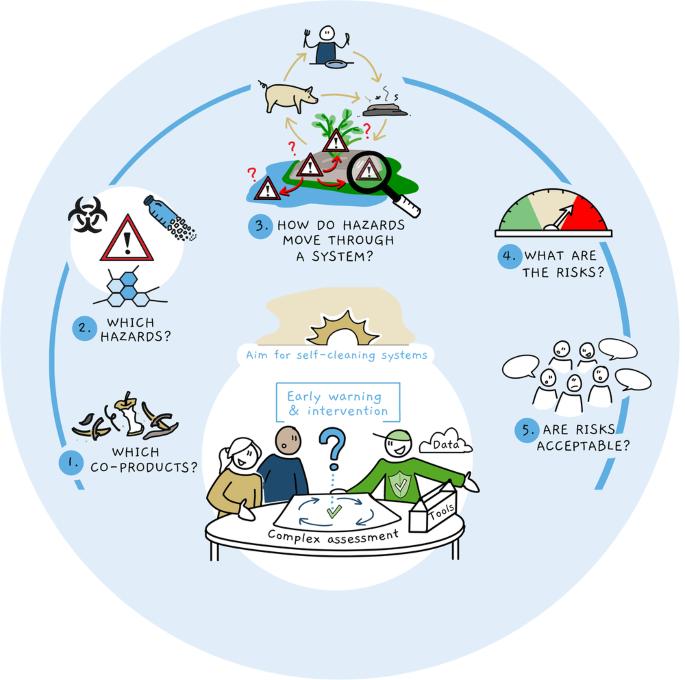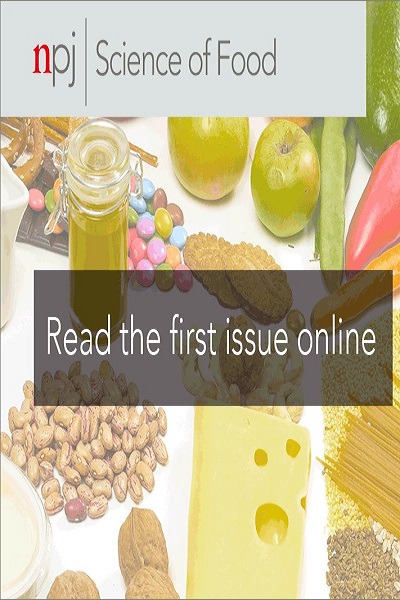采用新方法确定循环食品系统中食品安全方面的关键知识差距。
IF 6.3
1区 农林科学
Q1 FOOD SCIENCE & TECHNOLOGY
引用次数: 0
摘要
从线性生产过渡到循环农业食品系统是提高欧洲可持续性的重要一步。这需要重新设计食品生产系统,而这不可避免地会带来食品、动物和生态系统安全控制方面的挑战。在当前的食品生产系统中,许多食品安全危害已被了解并得到妥善管理,但随着向循环型食品生产系统的过渡,预计已知的危害可能会再次出现,新的危害也会出现或累积,从而导致新的食品安全风险--而且人们对其了解较少。在本视角文件中,我们提出了一种简单而有效的方法,以确定在向循环食品系统过渡过程中食品安全方面的知识差距。我们从当前的食品安全管理方法(如 HACCP)出发,提出了包含五个问题的方法。在两个案例中的应用表明,风险评估和管理应更多地强调意外(就其性质和来源而言)危害的暴露,因为危害可能在食品生产系统中循环和累积。五个知识缺口显而易见:需要(1) 风险评估和管理更多地关注未知危害和危害混合物,(2) 更多关于副产品中危害发生的数据,(3) 更好地了解危害在循环食品生产系统中的归宿,(4) 开发模型以充分执行对各种危害的风险评估,以及(5) 副产品价值评估的新方法,其中应采用安全设计方法。本文章由计算机程序翻译,如有差异,请以英文原文为准。

A novel approach to identify critical knowledge gaps for food safety in circular food systems
The transition from linear production towards a circular agro-food system is an important step towards increasing Europe’s sustainability. This requires re-designing the food production systems, which inevitably comes with challenges as regards controlling the safety of our food, animals and the ecosystem. Where in current food production systems many food safety hazards are understood and well-managed, it is anticipated that with the transition towards circular food production systems, known hazards may re-emerge and new hazards will appear or accumulate, leading to new -and less understood- food safety risks. In this perspective paper, we present a simple, yet effective approach, to identify knowledge gaps with regard to food safety in the transition to a circular food system. An approach with five questions is proposed, derived from current food safety management approaches like HACCP. Applying this to two cases shows that risk assessment and management should emphasize more on the exposure to unexpected (with regards to its nature and its origin) hazards, as hazards might circulate and accumulate in the food production system. Five knowledge gaps became apparent: there’s a need for (1) risk assessment and management to focus more on unknown hazards and mixtures of hazards, (2) more data on the occurrence of hazards in by-products, (3) better understanding the fate of hazards in the circular food production system, (4) the development of models to adequately perform risk assessments for a broad range of hazards and (5) new ways of valorization of co-products in which a safe-by-design approach should be adopted.
求助全文
通过发布文献求助,成功后即可免费获取论文全文。
去求助
来源期刊

NPJ Science of Food
FOOD SCIENCE & TECHNOLOGY-
CiteScore
7.50
自引率
1.60%
发文量
53
期刊介绍:
npj Science of Food is an online-only and open access journal publishes high-quality, high-impact papers related to food safety, security, integrated production, processing and packaging, the changes and interactions of food components, and the influence on health and wellness properties of food. The journal will support fundamental studies that advance the science of food beyond the classic focus on processing, thereby addressing basic inquiries around food from the public and industry. It will also support research that might result in innovation of technologies and products that are public-friendly while promoting the United Nations sustainable development goals.
 求助内容:
求助内容: 应助结果提醒方式:
应助结果提醒方式:


